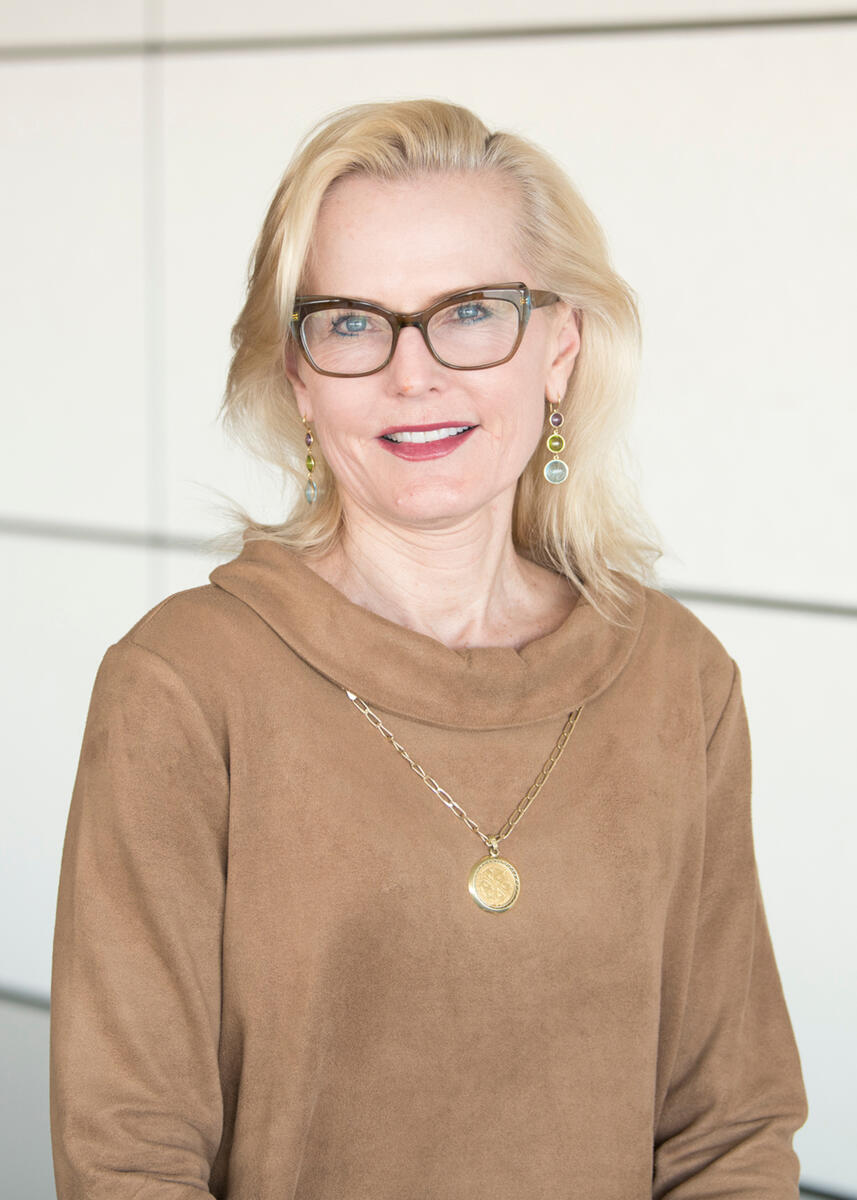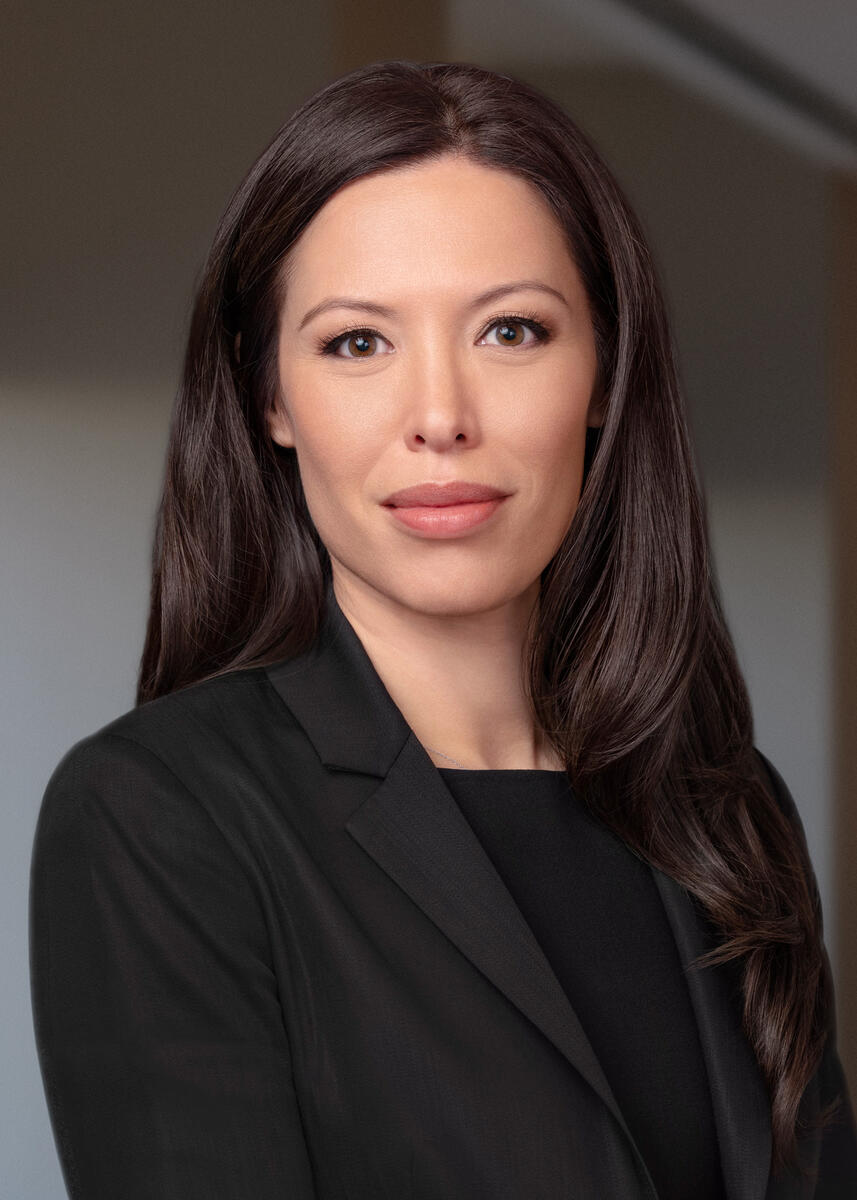Who Will Finance the AI Revolution?
Deployment of AI is accelerating exponentially, and the nascent industry requires unprecedented investment to grow. We spoke to two Yale College alums and leaders at Goldman Sachs—Kim Posnett, global co-head of investment banking; and Christina Minnis, global head of credit and asset finance and head of global acquisition finance—about where the capital to support an AI transition is coming from.

How is Goldman advising clients about the potential impact of AI on their industries?
Posnett: We don’t think about AI as just another technological shift. We think of it as a fundamental transformation that’s reshaping industries and competitive dynamics globally.
First, from a macroeconomic and geopolitical perspective, we have research teams and economists who are analyzing AI’s broad economic impact and how it influences productivity, labor markets, and global growth. This helps our clients understand how AI can drive efficiency and productivity gains.
Second, we also offer industry-specific insights. AI affects industries differently. We could be thinking about revolutionizing financial services through algorithmic trading and risk management, or revolutionizing healthcare through drug discovery and diagnostics, or transforming industrials via automation.
The third category of advice is client-centric strategies; this is core to what we do for corporate clients. We advise them on M&A strategies, who to buy, what’s the strategic rationale, what’s the competitive landscape, and how is it evolving.
We spent over $280 billion, in today’s dollars, putting a man on the moon. We think AI hyperscalers are going to spend $300 billion just this year. We’re talking about trillions and trillions of dollars, dwarfing what this country has invested in large projects before.
Most recently my client conversations have been about the race for global AI supremacy, how companies can operationalize AI at the enterprise level, and how to finance the AI infrastructure build-out.
Who are the emerging AI investors, and where are you seeing the most opportunity?
Posnett: AI supercomputers are massive, highly complex systems that require huge amounts of capital to build. We’re seeing a broad and diversified set of players interested in investing across this landscape. There are funds who have historically provided capital to this space such as infrastructure funds, sovereign wealth funds, and pension funds. But the size and scale of investment needed is very different with AI. Beyond that, there are new pockets of emerging capital like real estate funds, asset managers, insurance aggregators, and traditional private equity.
There’s also a significant focus on partnerships with international investors right now, specifically in the Middle East. The Middle East is very active and engaged in finding ways to deploy capital into the space.
AI seems to be a very capital-intensive industry. Is this akin to other periods of significant technological advancement?

Christina Minnis
Minnis: If you look back in time, we spent over $280 billion, in today’s dollars, putting a man on the moon; about $10 billion on the Panama Canal; and over $500 billion on the entire U.S. highway system. But we think AI hyperscalers are going to spend $300 billion just this year. Microsoft is going to spend about $80 billion by itself. We’re talking about trillions and trillions of dollars, dwarfing what this country has invested in large projects before.
Because of the evolution of the U.S. capital markets, we’re not concerned by the size of this need. We have multiple places to raise this capital in a very cost-effective, constructive way. That’s why we’ve formed the Capital Solutions Group at Goldman Sachs, which combines our great origination capabilities and relationship with our corporate and alternative asset manager clients with our distribution, risk management, and structuring capabilities. For example, we were able to deliver deals like the recent Intel transaction, where $11 billion of capital was raised off-balance sheet through our proprietary financing structure placed with the asset manager Apollo.
You have clients who need the capital, and investors that are anxious to put money to work and support this. It’s really exciting to be a banker because we sit right between the two, and we’re uniquely positioned to solve these problems.
What have you seen in the AI space over the last few years that you couldn’t imagine seeing before ChatGPT was released in 2022?
Posnett: I don’t think people anticipated the sheer scale of the AI infrastructure build-out that would be needed to support these new models. The four big hyperscalers—Amazon, Alphabet, Meta, and Microsoft—spent a combined $116 billion in 2022 on capital expenditure. Two years later, in 2024, they spent nearly $200 billion. That’s stunning. What’s even more stunning is what they’ve publicly committed to investing this year. Microsoft has plans to invest $80 billion globally on developing data centers, training AI models, and deploying AI- and cloud-based applications. Meta announced they plan to spend up to $65 billion on AI infrastructure. Alphabet’s projecting $75 billion, and Amazon’s projecting $100 billion.

Kim Posnett
I also don’t think people would have predicted that the most important and strategic assets to these tech companies would be data, compute power, and land. A lot of the hyperscalers talk about building multi-gigawatt data centers. To put that in context, one gigawatt of power is what it takes to power the entire city of Miami; it’s staggering how much energy you need to run these AI models.
Will public or private markets dominate in funding all this investment?
Minnis: We believe that the public and private markets will coexist and grow, and that there will be use cases for both. That’s what makes all of us comfortable that even with a lot of volatility, these markets will ebb and flow and step in where the needs are. I’m not concerned that we’ll have a situation where one of Kim’s clients suddenly can’t come up with the capital they need. The pricing may shift, the structure may shift, but the opportunity to invest in great assets is super exciting.
What are some of the long-term considerations with investing in AI?
Posnett: The build-outs of AI-enabled data centers are multi-year, in some cases multi-decade projects.
Minnis: What’s going on in the energy transition is also really significant. How are we going to marry this demand for power with the fact that we are moving toward newer and alternative energy sources? It’s a complicating factor because right now the most efficient energy available comes from coal-powered utility plans, which we’re trying to get away from.
At the same time, the cost of these models is seeing significant downward pressure.
Posnett: That’s why the DeepSeek news was so unsettling for people. What people deduced is that we will be able to build models much more cost-efficiently that have the same capabilities.
What drew each of you to finance?
Christina Minnis: In 1987, the year I graduated, it felt like 50% of the class applied to banking. I lived with eight women, and four of us took jobs on Wall Street. I’d like to say it was a very thoughtful, strategic plan I came up with on my own, but it was just that everyone was doing it. My first day on the job was a stock market crash, so I got off to a very rocky and volatile start. But I fell in love with banking immediately. The intensity, the pace, and the things you’re working on are different every day. There’s always a part of this industry that’s changing.
Kim Posnett: Both of my parents influenced me early on. They were immigrants who came to the U.S. to pursue their careers—my father as a research scientist and immunologist oncologist, and my mom as an asset manager at Lehman Brothers. They told me to just find something that I love and then study it, learn it, and excel at it.
I was drawn to finance because my mother loved it so much and because I loved math as a child. But finance is more nuanced and complicated than numbers. It sits at the intersection of macroeconomics, business strategy, geopolitics, and people management. It’s about making decisions that shape the future, whether that’s by helping a company expand into new markets, or enabling groundbreaking technology, or supporting entrepreneurs.
As SOM students prepare for their careers, how should they be thinking about AI?
Posnett: To thrive in the AI-first era, students need to embrace technology and human-centric leadership at the same time. It’s not just about learning how AI works, but also how to apply it strategically, ethically, and innovatively. The students who develop the skills to do that will excel in the future.
I have four concrete pieces of advice.
Number one is developing a strong analytical foundation; AI is going to aid decision-making, but it won’t replace it. Students still need to have an understanding of finance, economics, and business fundamentals.
Number two, people need to cultivate adaptability. As technology continues to accelerate, it puts the burden on us to be able to adapt more quickly.
Number three is developing strategic thinking. AI can process data at scale in a way that our brains can’t, but humans have to be responsible for making big, complex, dynamic, and ethical decisions. You can hone those skills through case competitions, internships, and exposing yourself to real-world problem-solving.
The last thing, which I don’t think AI can or will replace, is mastering people and leadership skills. AI doesn’t have emotional intelligence, or communication and leadership skills. Those skills will become even more important over time.
Minnis: It’s an exciting time to be at the forefront of what we anticipate will be a seismic shift in how society operates.
Students today will not just have a front row seat, but will be instrumental in driving adoption and innovation in this space. As you are entering careers and deciding how and if you want to be involved, it is a great time to be adaptive and intellectually curious.